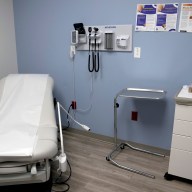Agency chief explains holdup for train 407
GO Transit packed its schedule with trains over the last decade, partly to make up for a lack of new tracks and infrastructure, but the result is brief holdups can begin a cascade effect.
Anna de la Cruz of Scarborough sent me a letter she wrote to GO Transit at the end of May: “For the last several months, I, and everyone on my train, have been quietly seething at the fact that our train is late at least four out of five days a week, and for at least 10 to 15 minutes, sometimes more!!!
“We take the 8:33 a.m. Lakeshore East train to Union from Guildwood and we seem to be the only morning train that keeps having the service disrupted. We haven’t heard of any of the earlier trains being chronically late.
“Believe me, I would take an earlier train if I could, but I can’t.”
De la Cruz reports things haven’t been as bad since she complained, but Don Maxwell of Pickering is also a regular on this same run and has updated me on several cancellations.
He writes, “We all know that we should expect delays from time to time. But when the delays are virtually daily, and affect the same scheduled train and the delay is for the same amount of time, then that’s far too coincidental for us to believe there isn’t something else going on.
“While GO has stopped providing what everyone knows are generally bogus excuses, we want to know what is going on.”
This train, identified by GO as No. 407, is chronically late because it runs at the end of rush hour, according to agency chief Gary McNeil.
It is delayed at least five minutes almost 50 per cent of the time, he says, and has one of the worst records of all GO trains.
There is so little time between trains that small delays during peak hours get compounded, he says.
“It’s symptomatic of the majority of the GO system, especially along the Lakeshore line and the Georgetown line and Richmond Hill lines.
“We are operating at capacity, from a train movement perspective. Everything has to function to 100 per cent in order to keep all the trains on schedule.
“There’s literally no slough in any of the times.”
GO Transit packed its schedule with trains over the last decade, partly to make up for a lack of new tracks and infrastructure, but the result is brief holdups can begin a cascade effect.
McNeil admits the recent change from two locomotive engineers on Lakeshore trains to one has cost precious minutes when trains turn around.
McNeil says this problem should “evaporate” when a new crewing contract begins next year.
As for train 407, GO has asked CN Rail for permission to shift an earlier run by three minutes to ease the pressure on the schedule.
Will that be enough to get our readers to work on time?
We shall see in September.
















